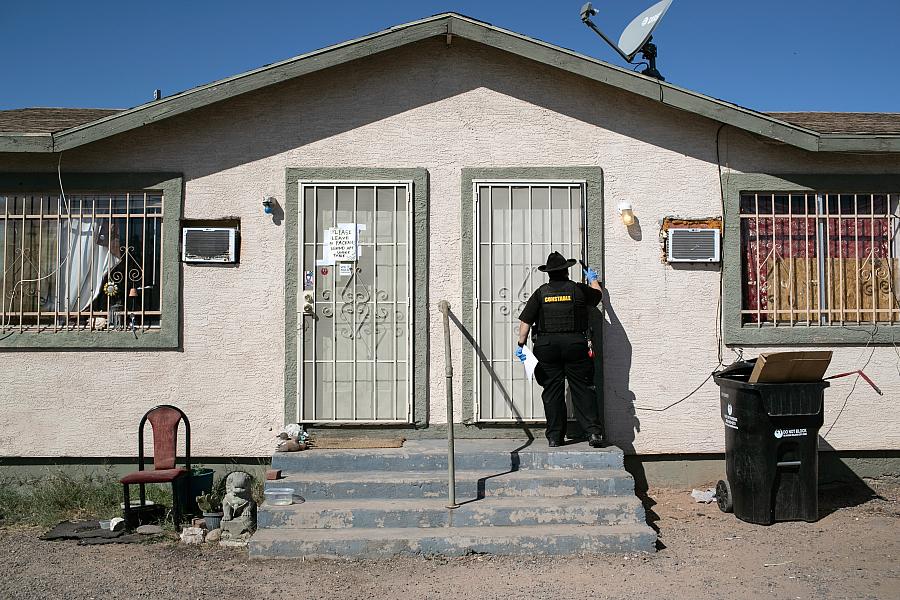Get the story on evictions in your community as protections disappear

When attorney Tina Rosales considers the end of the country’s eviction moratorium, she thinks of the mom with four children who had to choose between getting her tire fixed or paying rent. The mom chose making rent, which later meant she didn’t make it to work and lost her job. Then, without her paycheck, the eviction notice still came, said Rosales, a housing policy advocate with the Western Center on Law & Poverty.
In the coming months and years, Rosales predicts a nationwide increase in evictions as well as people sacrificing basic life necessities to pay rent. It’s up to reporters to find stories that humanize the impact of these trends, she said.
The Supreme Court blocked the CDC’s extended eviction moratorium in August, allowing evictions to resume in states that have not enacted their own bans. The crisis has been compounded by a slow rollout of federal rental assistance funds.
“It can get very easy to get lost in the laws, not realizing that actual people are suffering from evictions and the aftereffects of it,” she said in a recent Center for Health Journalism webinar.
Rosales joined Rutgers University professor Peter Hepburn and journalist Kriston Capps of Bloomberg CityLab to discuss why evictions happen and what the end of the moratorium means for the health and wellbeing of low-income people and families. They also offered tips for journalists looking to convey peoples’ struggle with data-driven and personal stories.
The eviction landscape
Even prior to the pandemic, U.S. landlords filed millions of eviction cases annually. As rents have increased dramatically in many regions, wages have remained stagnant, especially for low-wage workers, said Hepburn, an assistant professor of global urban studies and urban systems.
The housing crisis extends beyond big cities like New York and Los Angeles. Rural areas and smaller cities are also feeling the pinch. The struggle is disproportionately experienced by some groups such as Black renters, women, and households with kids, Hepburn said. Evictions can impact health and wellbeing, from increased depression and anxiety to respiratory conditions and elevated risk of pre-term birth, he said.
In response to the pandemic, The Eviction Lab at Princeton University began collecting real-time data for about a quarter of the country’s renter households, across six states and 31 cities. Among the site’s features: a list of top eviction hotspots and buildings that are responsible for most filings. For example, the data shows about one-third of the evictions filings in Jacksonville originate from just 100 buildings.
“An intrepid reporter looking for a story could investigate further, aiming to show how these buildings are potentially linked or where they’re clustered,” he said.
The lab has also looked at the relationship between COVID-19 vaccination rates and eviction filings. Since the pandemic began, the ZIP codes with the highest rates of eviction filings have had significantly lower rates of COVID vaccination. Studies have also shown that states that lifted their eviction moratoriums in the summer of 2020 experienced higher COVID-19 case counts and mortality.
With the protections issued during the pandemic, the country’s eviction rates fell and stayed below historic averages. Despite the end of the country’s eviction moratorium, it’s important to note a handful of states are leaving protections in place. That’s led to a lot of geographic variation across the country, he noted.
Angles to pursue
Even in states like California that have rental assistance programs available, many people aren’t accessing these resources, Rosales said. The application might be too onerous, maybe they don’t have Internet or they run into language barriers. Some landlords may rather pursue eviction than get rental assistance in places, particularly in locales where rent control has kept prices well below market value.
Rosales also predicts an increase in eviction for reasons other than not paying rent, such as owners moving in, or owners refusing to renew a lease. She also flagged the potential for tenant harassment, recalling the story of an undocumented client living in an illegal unit in Los Angeles. When he couldn’t pay his rent, the landlord sent people to verbally harass him, threatening to call U.S. Immigration and Customs Enforcement.
“That person ended up developing PTSD-like symptoms,” she said. “it’s not only the fear of eviction but the harassment and going through the eviction process.”
She stressed the disparity in access to legal representation, which is vastly more common for landlords than tenants. Rosales also urged reporters to follow what happens after to tenants after an eviction and share their stories.
Covering the story
Patterns in eviction data can lead to powerful local stories, journalist Capps said. When he looked at Houston eviction data, one property management company kept coming up. He dug deeper and found that the buildings were located within a single suburban area where “housing precarity is really rampant.” That large landlord had received $2.7 million in federal loans.
“This is a landlord that in one hand is getting money from the federal government to stay afloat and, with the other hand, mass evicting many, many hundreds of tenants over the course of the pandemic.”
Other useful sources include the attorneys filing evictions, and local tenant attorneys and judges, who are more accessible than one might think, he said. New to the beat? “Go to court,” he urged reporters. At the national level, he advised reporters to keep an eye on which states aren’t using federal rental assistance funds.
Ultimately, eviction filings and other data can only tell so much. Reporters need to interview the people directly impacted, Capps said. “Unfortunately, it is very easy to find stories of real despair happening every day in housing court.”
**
Watch the full presentation here:

